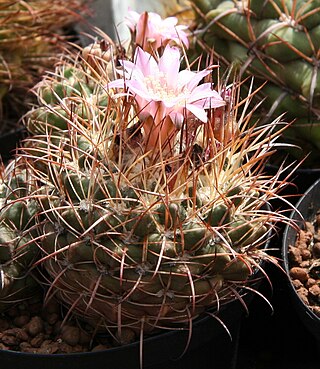
Neowerdermannia vorwerkii, also known as achakana, is a species of cactus from high altitudes in Bolivia and northern Argentina.

Gymnocalycium baldianum, the spider-cactus or dwarf chin cactus, is a species of flowering plant in the cactus family Cactaceae, native to the Catamarca Province in Argentina.

Gymnocalycium monvillei is a species of Gymnocalycium from Argentina.

Gymnocalycium bruchii is a species of Gymnocalycium from Argentina.
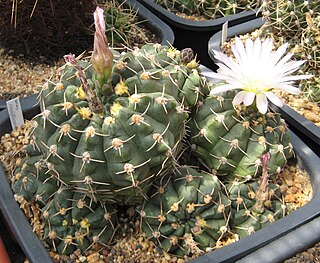
Gymnocalycium uruguayense is a species of Gymnocalycium from Brazil and Uruguay.

Gymnocalycium amerhauseri is a species of Gymnocalycium from Argentina.
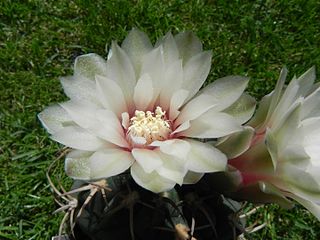
Gymnocalycium bayrianum is a species of Gymnocalycium from Argentina.
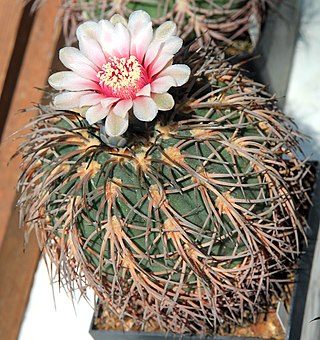
Gymnocalycium spegazzinii is a species of Gymnocalycium from Argentina and Bolivia named after the botanist C. L. Spegazzini.
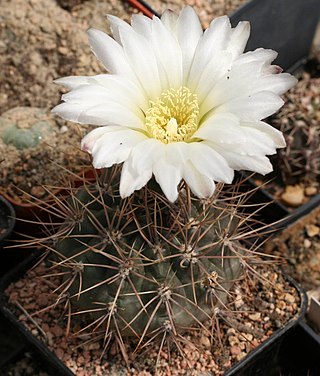
Gymnocalycium gibbosum is a species of Gymnocalycium from Argentina.
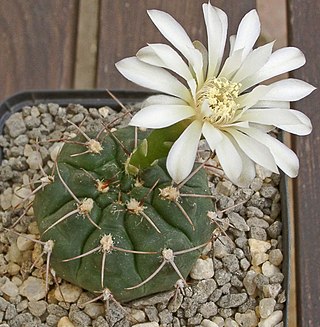
Gymnocalycium ochoterenae is a species of Gymnocalycium from Argentina.

Cleistocactus buchtienii is a species of columnar cacti in the genus Cleistocactus.
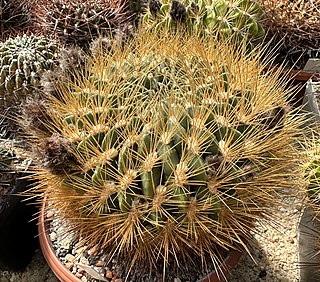
Lobivia chrysochete is a species of Lobivia found in Bolivia and Argentina.
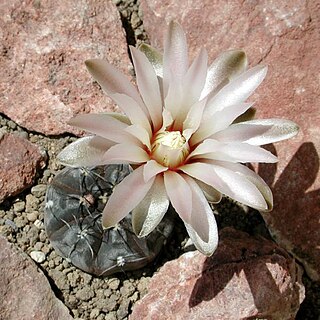
Gymnocalycium berchtii is a species of Gymnocalycium from Argentina.

Gymnocalycium capillense is a species of Gymnocalycium cactus from Argentina.
Lobivia pugionacantha, is a species of Lobivia found in Argentina and Bolivia. Lobivia is a genus of cacti.

Soehrensia smrziana is a species of Soehrensia found in Argentina.

Gymnocalycium mostii is a species of Gymnocalycium from Argentina.

Gymnocalycium neuhuberi is a species of cactus in the genus Gymnocalycium, endemic to Bolivia.
Gymnocalycium kroenleinii is a species of cactus in the genus Gymnocalycium, endemic to Argentina.
Gymnocalycium striglianum is a species of cactus in the genus Gymnocalycium, endemic to Argentina.


















